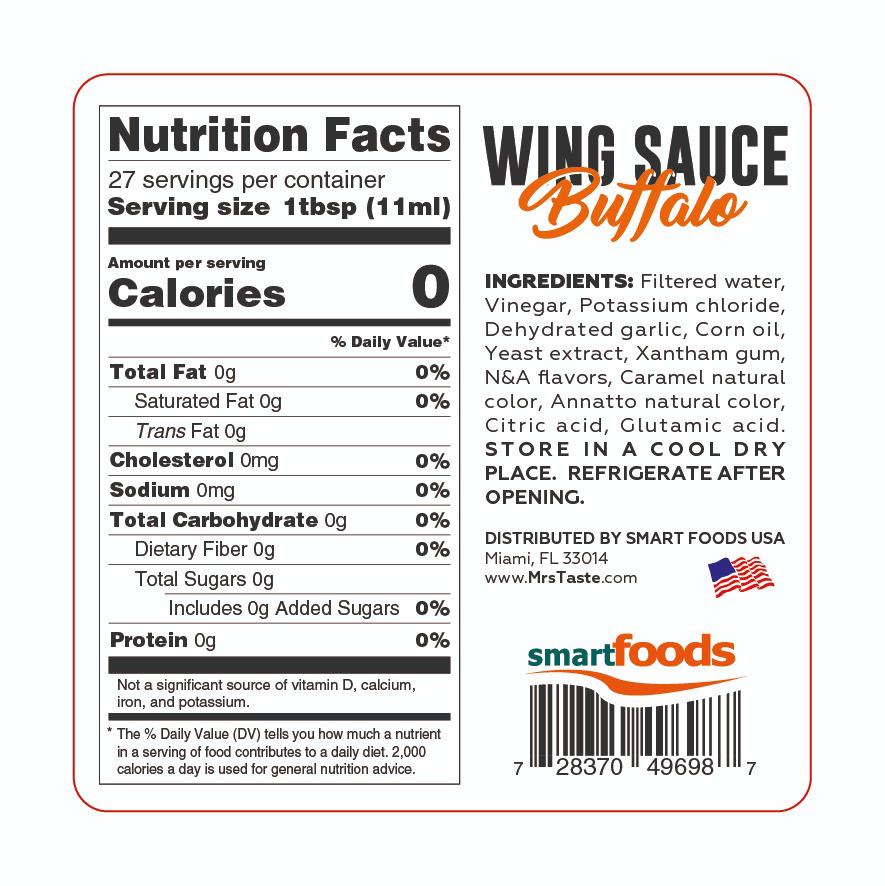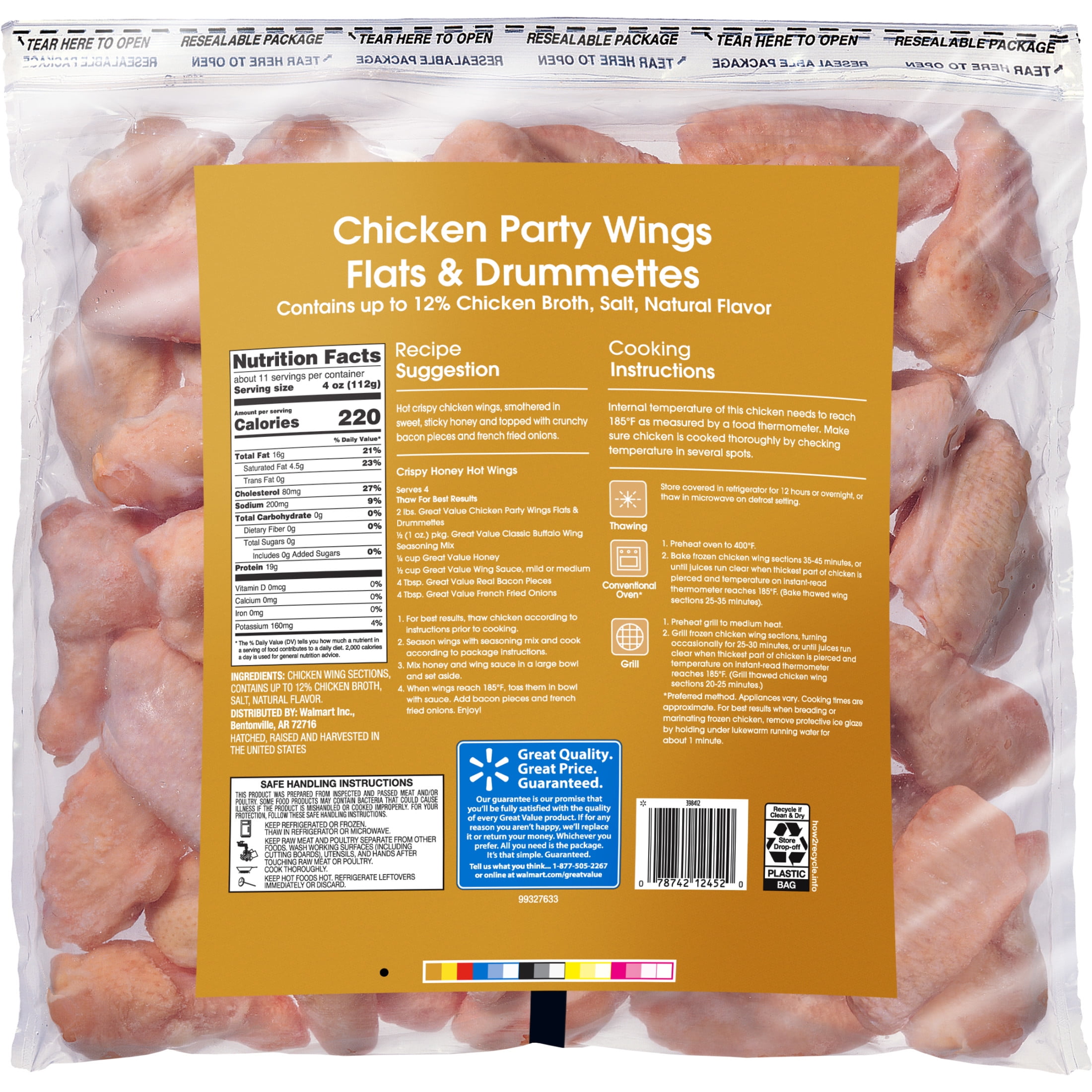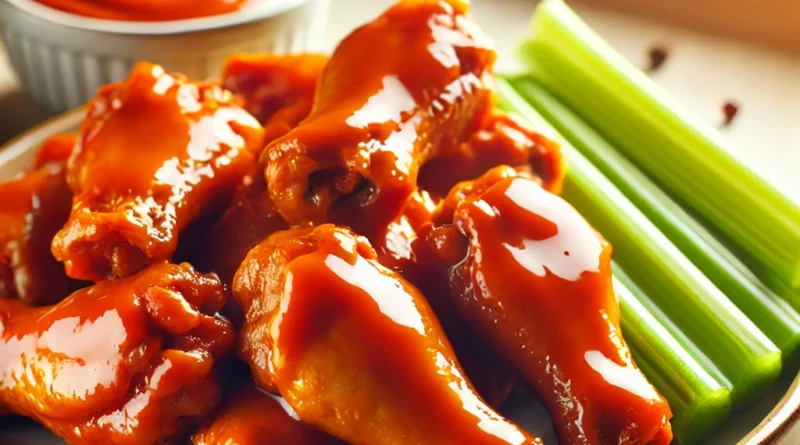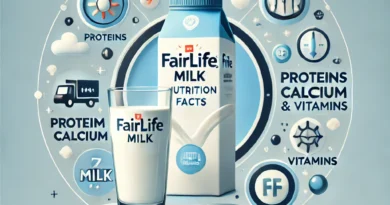What Nutrients Do Buffalo Wings Have: Surprising Health Facts
Buffalo wings are a popular dish loved by many. But what nutrients do they have?
Buffalo wings, known for their spicy kick and savory flavor, are a staple at gatherings and game nights. While they are often enjoyed for their taste, it’s important to consider their nutritional content. Understanding what nutrients buffalo wings provide can help you make informed choices about your diet.
From protein to vitamins, buffalo wings offer more than just a tasty treat. Dive in to explore the nutritional profile of this beloved dish and see how it fits into your dietary needs. Whether you’re a fan or just curious, this guide will shed light on the nutrients found in buffalo wings.
Nutritional Breakdown
Buffalo wings are a popular appetizer known for their spicy flavor and crispy texture. While they are a favorite at parties and sports events, it’s important to understand their nutritional content. This nutritional breakdown will help you make informed choices about consuming buffalo wings.
Calories Per Serving
Buffalo wings can vary in calorie content depending on their preparation and the amount of sauce used. On average, a serving of buffalo wings (about 5 wings) contains:
- Calories: 400-500
The calorie count may be higher if the wings are deep-fried or coated with a thick layer of sauce. Here is a quick comparison of the calorie content based on different preparation methods:
| Preparation Method | Calories per Serving |
|---|---|
| Baked | 300-400 |
| Deep-fried | 450-550 |
| Grilled | 350-450 |
Keep in mind that additional ingredients, such as dipping sauces and sides, can add extra calories. Using a lighter sauce or opting for baked or grilled wings can help reduce the calorie intake.
Macronutrient Composition
Buffalo wings provide a good source of protein but also come with fats and carbohydrates. Here’s a typical macronutrient breakdown for a serving of 5 buffalo wings:
- Protein: 25-30 grams
- Fat: 25-35 grams
- Carbohydrates: 0-10 grams
Most of the fat content in buffalo wings comes from the skin and the frying oil. Baking or grilling the wings can reduce the fat content significantly. The protein in buffalo wings helps in muscle repair and growth, making them a popular choice for those looking to increase their protein intake. Here is a detailed macronutrient breakdown for different preparation methods:
| Preparation Method | Protein (grams) | Fat (grams) | Carbohydrates (grams) |
|---|---|---|---|
| Baked | 28 | 20 | 2 |
| Deep-fried | 26 | 35 | 5 |
| Grilled | 30 | 22 | 1 |
Opting for healthier preparation methods like baking or grilling and using a lighter sauce can make buffalo wings a healthier choice. Enjoy your wings while keeping an eye on the nutritional content.
Proteins In Buffalo Wings
Buffalo wings are a popular snack and appetizer known for their spicy flavor. But did you know they also provide important nutrients? One of the key nutrients in buffalo wings is protein. Let’s explore the proteins in buffalo wings to understand their benefits.
Source Of Protein
Buffalo wings are made from chicken, which is a great source of protein. Chicken is a lean meat that provides a high amount of protein without too much fat. Here are some key points about the protein content in buffalo wings:
- High Protein Content: Chicken wings contain around 27 grams of protein per 100 grams. This makes them a substantial source of protein.
- Lean Protein: Chicken is considered a lean meat, especially if the skin is removed. This means it provides protein without a lot of additional fat.
- Muscle Building: Protein is essential for muscle repair and growth. Eating buffalo wings can help support muscle health.
Here is a table summarizing the protein content in buffalo wings:
| Portion Size | Protein Content |
|---|---|
| 100 grams | 27 grams |
| 5 wings (approx.) | 20 grams |
Buffalo wings can be a tasty way to boost your protein intake. Just be mindful of the sauces and extra calories they might add.
Protein Quality
The quality of protein in buffalo wings is another important aspect. Not all proteins are created equal. Here are some points about the protein quality in buffalo wings:
- Complete Protein: Chicken provides complete protein. This means it contains all the essential amino acids your body needs.
- Digestibility: The protein in chicken is highly digestible. Your body can easily absorb and use it.
- Amino Acids: Essential amino acids are crucial for various bodily functions. Chicken protein includes amino acids like leucine, which plays a key role in muscle synthesis.
Here’s a brief look at the amino acid profile of chicken protein:
| Amino Acid | Function |
|---|---|
| Leucine | Muscle Protein Synthesis |
| Valine | Energy Production |
| Lysine | Collagen Formation |
The high-quality protein in buffalo wings can help meet your dietary protein needs. It supports muscle health, repair, and overall bodily functions.
Fats Content
Buffalo wings are a popular dish enjoyed by many. They are known for their spicy flavor and crispy texture. But what nutrients do they contain, especially regarding fats? Understanding the fat content in buffalo wings can help you make informed dietary choices. Let’s explore the types of fats found in buffalo wings and their impact on health.
Types Of Fats
Buffalo wings contain various types of fats that contribute to their delicious taste. Here are the main types of fats present in buffalo wings:
- Saturated fats: These fats are typically solid at room temperature. They are found in animal products like chicken. Buffalo wings contain a significant amount of saturated fats due to the chicken skin and frying process.
- Unsaturated fats: These fats are usually liquid at room temperature. They come in two forms: monounsaturated and polyunsaturated fats. Buffalo wings have some unsaturated fats, mainly from cooking oils used for frying.
- Trans fats: These are artificial fats created during hydrogenation. They are often found in processed foods. While the frying process can create trans fats, high-quality oils can minimize their presence.
Here is a table summarizing the types of fats in buffalo wings:
| Type of Fat | Description | Presence in Buffalo Wings |
|---|---|---|
| Saturated Fats | Solid at room temperature, found in animal products | High |
| Unsaturated Fats | Liquid at room temperature, found in oils | Moderate |
| Trans Fats | Artificial fats, found in processed foods | Low to Moderate |
Impact On Health
The fat content in buffalo wings can have various effects on health. Understanding these impacts can help you make better dietary choices: Saturated fats are linked to increased levels of LDL (bad) cholesterol. High LDL cholesterol can lead to heart disease and other cardiovascular problems. Eating buffalo wings in moderation can help manage these risks. Unsaturated fats are considered healthier fats. They can improve heart health by increasing HDL (good) cholesterol levels. Cooking buffalo wings with oils rich in unsaturated fats, like olive oil, can make them a healthier option. Trans fats are the least healthy type of fat. They can increase LDL cholesterol and decrease HDL cholesterol. This can lead to heart disease. Minimizing trans fats in your diet is crucial for maintaining heart health. Here are some tips to enjoy buffalo wings while managing fat intake:
- Choose cooking methods like baking or grilling instead of frying.
- Use oils high in unsaturated fats for cooking.
- Limit portion sizes to avoid excessive fat intake.
- Remove the skin from the chicken to reduce saturated fat content.
By understanding the types of fats in buffalo wings and their health impacts, you can enjoy this tasty dish in a healthier way.

Carbohydrates Explained
Buffalo wings are a beloved snack. Many people enjoy their spicy, savory taste. But what nutrients do they have? Let’s focus on carbohydrates in buffalo wings. Carbohydrates are essential. They provide energy. Let’s break them down further.
Sugar Content
Buffalo wings contain some sugar. This sugar comes from the sauce. The sauce usually has ingredients like:
- Hot sauce
- Butter
- Honey or sugar
The amount of sugar can vary. It depends on the recipe. Here is a simple table showing sugar content in different wing sauces:
| Sauce Type | Sugar (grams) |
|---|---|
| Classic Buffalo | 1-2 grams |
| Honey BBQ | 5-7 grams |
| Teriyaki | 4-6 grams |
The sugar content is not high. But it adds up. Eating many wings can increase your sugar intake. Be mindful of the sauce you choose.
Fiber Presence
Fiber is important for digestion. It helps keep you full. But buffalo wings do not have much fiber. Chicken wings are mainly protein and fat. The fiber content comes from other ingredients. Possible fiber sources in buffalo wings:
- Vegetables served with wings (like celery and carrots)
- Whole grain breading (if used)
Here is a comparison of fiber content:
| Ingredient | Fiber (grams) |
|---|---|
| Plain Chicken Wing | 0 grams |
| Celery (1 medium stalk) | 1 gram |
| Carrots (1 medium) | 1.7 grams |
Adding vegetables to your meal can help. It increases fiber intake. Enjoy wings with a side of veggies. This makes the meal more balanced.
Vitamins And Minerals
Buffalo wings are not only a popular snack but also a source of various nutrients. They contain a range of vitamins and minerals that can benefit your health. Understanding these nutrients can help you make informed dietary choices.
Essential Vitamins
Buffalo wings are packed with essential vitamins that support your overall well-being. Here are some key vitamins found in buffalo wings:
- Vitamin A: Supports vision, immune function, and skin health.
- Vitamin B6: Aids in brain development and function, and helps the body convert food into energy.
- Vitamin B12: Crucial for red blood cell formation and neurological function.
- Vitamin D: Important for bone health and immune system support.
Here is a table summarizing the vitamins found in buffalo wings:
| Vitamin | Function |
|---|---|
| Vitamin A | Supports vision and immune health |
| Vitamin B6 | Brain function and energy conversion |
| Vitamin B12 | Red blood cell formation and neurological function |
| Vitamin D | Bone health and immune support |
Including buffalo wings in your diet can help you meet your daily vitamin needs. It’s important to balance them with other nutritious foods to maintain a healthy diet.
Key Minerals
Buffalo wings also provide several key minerals that your body needs. These minerals play a crucial role in maintaining various bodily functions. Some of the important minerals found in buffalo wings include:
- Iron: Essential for the production of hemoglobin and oxygen transport in the blood.
- Zinc: Supports immune function, wound healing, and DNA synthesis.
- Phosphorus: Vital for healthy bones and teeth, and helps the body make energy.
- Magnesium: Involved in over 300 biochemical reactions, including muscle and nerve function.
Here is a table summarizing the minerals found in buffalo wings:
| Mineral | Function |
|---|---|
| Iron | Oxygen transport and hemoglobin production |
| Zinc | Immune function and DNA synthesis |
| Phosphorus | Bone health and energy production |
| Magnesium | Muscle and nerve function |
Incorporating buffalo wings into your meals can help you get these essential minerals. Just remember to eat them in moderation and pair them with other nutrient-rich foods.

Sodium Levels
Buffalo wings are a popular snack, but they come with a high sodium content. Sodium is an essential mineral, but too much can impact your health. Let’s explore the sodium levels in buffalo wings and understand their impact and recommended limits.
Impact Of Sodium
High sodium levels can affect your health in several ways. Buffalo wings are often high in sodium due to the sauce and seasoning used. Here’s how high sodium intake impacts your body:
- Blood Pressure: Too much sodium can raise your blood pressure. High blood pressure is a risk factor for heart disease and stroke.
- Kidney Function: Your kidneys filter excess sodium out of your body. High sodium intake makes your kidneys work harder, which can lead to kidney disease.
- Water Retention: Sodium causes your body to retain water. This can lead to bloating and swelling, especially in your hands and feet.
- Bone Health: Excess sodium can cause calcium loss through urine, weakening your bones over time.
To give you a clearer picture, here’s a table showing the approximate sodium content in a serving of buffalo wings:
| Serving Size | Sodium Content |
|---|---|
| 6 wings | 1200 mg |
| 10 wings | 2000 mg |
| 20 wings | 4000 mg |
Recommended Limits
To maintain good health, it’s important to stick to recommended sodium limits. Here are the guidelines for sodium intake:
- Adults: The American Heart Association recommends no more than 2300 mg of sodium per day. Ideally, adults should aim for 1500 mg per day.
- Children: Sodium intake for children varies by age. For example, children aged 4-8 should consume no more than 1900 mg per day.
- Special Populations: People with hypertension, kidney disease, or heart conditions should be even more cautious. They should aim for lower sodium levels as recommended by their healthcare provider.
Given that a single serving of buffalo wings can exceed the daily limit, it’s important to monitor your intake. Balancing your diet with low-sodium foods can help manage overall sodium levels. Consider these tips to reduce sodium intake when enjoying buffalo wings:
- Opt for homemade buffalo wings. This way, you can control the amount of salt in the recipe.
- Choose sauces with less sodium or make your own using fresh ingredients.
- Pair wings with fresh vegetables or a salad to balance the meal.
By being mindful of your sodium intake, you can enjoy buffalo wings without compromising your health.
Caloric Density
Buffalo wings are a popular snack that many people enjoy. They are flavorful and satisfying, but understanding their nutritional content is important. One key aspect of their nutrition is their caloric density. Caloric density refers to the number of calories in a specific weight of food. Foods with high caloric density can provide more calories in smaller portions, which is crucial to consider for dietary planning.
Comparison With Other Snacks
Buffalo wings have a higher caloric density compared to many other snacks. This means they pack more calories per ounce. Let’s compare them with other common snacks:
| Snack | Calories per 100 grams |
|---|---|
| Buffalo Wings | 290 |
| Potato Chips | 536 |
| Pretzels | 380 |
| Cheese | 402 |
| Popcorn | 375 |
From the table, potato chips have the highest caloric density. Buffalo wings are lower in caloric density compared to chips, but higher than popcorn and pretzels. This information helps you understand how buffalo wings fit into your diet compared to other snacks. Choosing snacks with lower caloric density can help you manage your calorie intake better.
Serving Size Importance
Understanding the serving size of buffalo wings is crucial for managing caloric intake. A standard serving size is about 4-5 wings, which typically weighs around 100 grams. This serving provides roughly 290 calories. Here are some tips for keeping your portions in check:
- Measure your servings: Use a kitchen scale to measure 100 grams of buffalo wings.
- Count your wings: If you know 4-5 wings equal one serving, you can easily count them out.
- Avoid extra sauces: Dipping sauces can add extra calories. Use them sparingly or choose lower-calorie options.
In summary, keeping an eye on serving sizes can help you enjoy buffalo wings without consuming too many calories. Balancing your meals and snacks with foods of lower caloric density can further help manage your overall calorie intake.

Healthier Alternatives
Buffalo wings are a popular snack, especially during game nights and parties. They are flavorful and spicy. But many people wonder about their nutritional content and how to make them healthier. One way to enjoy buffalo wings without the guilt is to explore healthier alternatives.
Baking Vs. Frying
Traditional buffalo wings are usually deep-fried. This method adds extra fat and calories. Baking is a healthier alternative. It offers the same delicious taste with fewer unhealthy fats. Benefits of baking over frying:
- Less oil used, reducing calorie intake
- Lower risk of heart disease due to reduced unhealthy fats
- Retains more nutrients in the chicken
Here is a simple comparison:
| Cooking Method | Calories | Fat (g) |
|---|---|---|
| Frying | 400 | 24 |
| Baking | 200 | 10 |
Baking is straightforward:
- Preheat the oven to 425°F (220°C).
- Place chicken wings on a baking sheet.
- Bake for 25-30 minutes, turning halfway through.
Conclusion: Baking helps you enjoy buffalo wings with less guilt. It reduces unhealthy fats and calories while still offering a crispy texture.
Using Lean Meats
Another way to make buffalo wings healthier is to use leaner meats. Traditional buffalo wings are made from chicken wings, which have more fat. Using leaner cuts of meat like chicken breast or turkey can significantly reduce the fat content. Benefits of lean meats:
- Lower in fat, especially saturated fat
- Fewer calories
- Higher protein content
Here’s a comparison of different meats:
| Type of Meat | Calories | Fat (g) | Protein (g) |
|---|---|---|---|
| Chicken Wings | 200 | 15 | 15 |
| Chicken Breast | 120 | 2.5 | 24 |
| Turkey Breast | 120 | 1 | 26 |
To prepare lean meat buffalo wings:
- Cut lean meat into small pieces.
- Marinate in buffalo sauce for at least 30 minutes.
- Bake at 400°F (200°C) for 20-25 minutes.
Conclusion: Using lean meats makes buffalo wings healthier. It reduces fat and calories while boosting protein. This makes it a great choice for health-conscious individuals.
Frequently Asked Questions
What Nutrients Are In Buffalo Wings?
Buffalo wings are rich in protein from the chicken. They also contain essential minerals like iron and zinc. However, they can be high in fat and sodium, especially when deep-fried and sauced.
Are Buffalo Wings A Good Source Of Protein?
Yes, buffalo wings are a good source of protein. Chicken wings provide a substantial amount of protein, which is essential for muscle growth and repair.
Do Buffalo Wings Have Vitamins?
Buffalo wings contain vitamins like B6 and B12. These vitamins support energy production and brain function. However, the amount can vary depending on preparation.
Are Buffalo Wings High In Fat?
Buffalo wings can be high in fat, especially if deep-fried. The skin and cooking method contribute to the fat content. Choosing baked or grilled options can reduce fat intake.
Conclusion
Buffalo wings offer a mix of essential nutrients. Protein supports muscle health. Iron boosts energy. Zinc strengthens the immune system. Vitamins A and B6 aid vision and brain function. But, they also contain high fat and sodium levels. Enjoy buffalo wings in moderation.
Balance with vegetables for a healthier meal. Eating wisely ensures you get the nutrients you need. Always consider your dietary needs and preferences. Enjoy your food and stay healthy.




